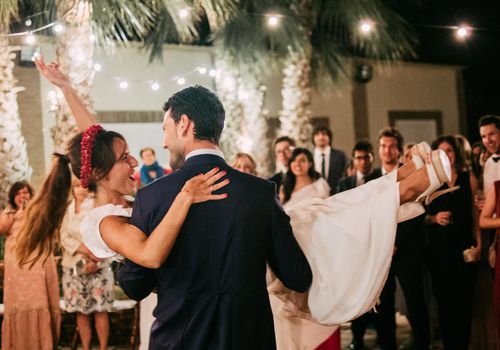The Biggest Wedding Budgeting Mistakes to Avoid
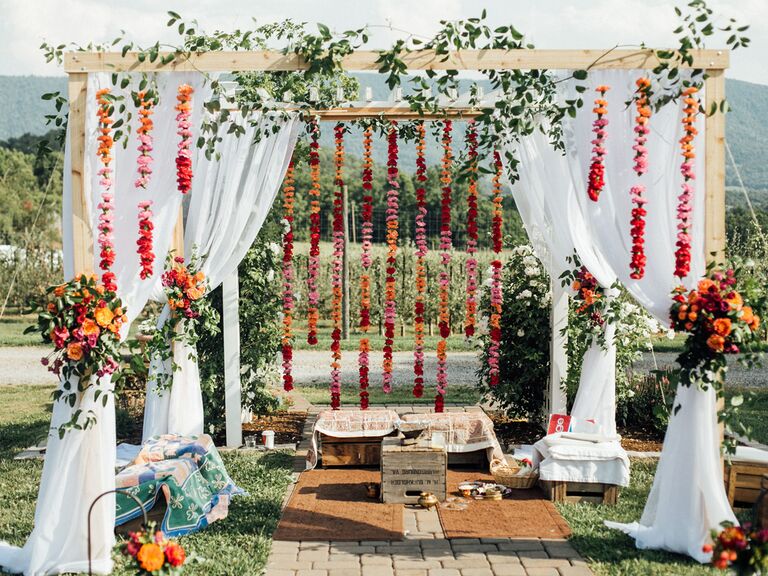
We have included third party products to help you navigate and enjoy life’s biggest moments. Purchases made through links on this page may earn us a commission.
“Expensive” and “stressful” might be two things that come to mind when you think of wedding budget planning, but they don’t have to be. Below, we share the biggest budgeting mistakes you should avoid in order to make your wedding planning process as fun and cost-efficient as possible. We also break down exactly how much each wedding element generally costs to help you determine how much to allocate for each item and service. Once you have an idea of how to properly divide funds, you’ll be able to avoid potential budgeting mistakes.
In this article:
- Wedding Budget Breakdown
- Budget Mistake 1: Not Determining Who’s Paying for What
- Budget Mistake 2: Not Allocating Funds Correctly
- Budget Mistake 3: Forgetting to Keep Track of How Much You’ve Spent
- Budget Mistake 4: Not Saving Where You Can
- Budget Mistake 5: Not Being Realistic
Wedding Budget Breakdown
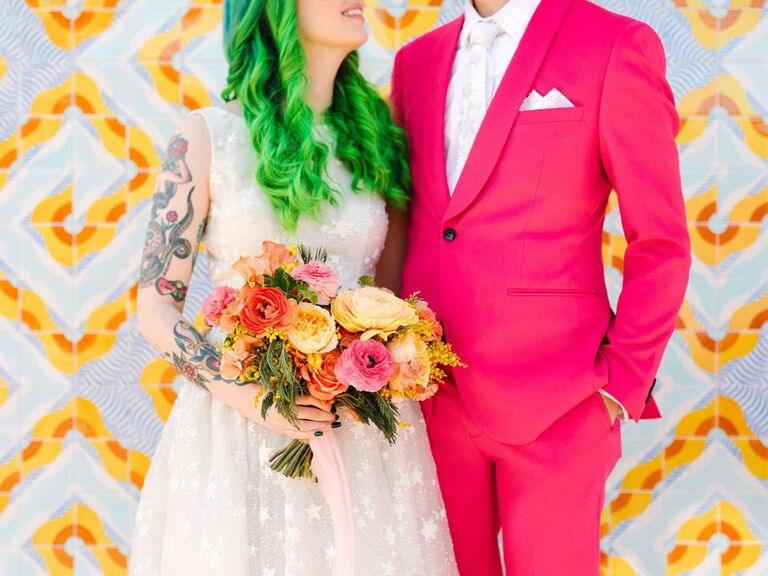
Below, we outline how much of your wedding budget should be allocated to specific expenses.
50% Percent: Venue, Catering and Rental Costs
The biggest part of your wedding budget will go toward the big-ticket items, which cover the cost of renting out your venue space, hiring caterers for food, alcohol, and rentals, such as tables, chairs, and dinnerware. Some couples also include the price of their cake in this 50% chunk of their budget.
12% Percent: Photography and Videography
When wedding budget planning, set aside at least 12% of your budget for the images and videos of your special day. After all, these are wedding keepsakes you’ll treasure forever. In addition to paying for the final products, you’ll need to cover the cost of the photographer’s and videographers‘ time.
9% Percent: Attire, Hair, and Makeup
Be sure to earmark at least 9% of your budget for your attire. Of course, this percentage should also include the cost of the dress and tuxedo rental, along with shoes and any accessories, such as jewelry or cufflinks. You will want to lump in the cost of your hair and makeup, too.
8% Percent: Decor
Allocate 8% for your ceremony and reception decor. This includes bouquets, flower arrangements, special lighting and decorations.
7% Percent: Entertainment
Whether you’re looking into hiring a live band or DJ, the price of hiring these professionals can vary. Do your research in advance to know exactly how much money to put aside for this portion of the wedding. When crunching numbers, we suggest putting 7% of your budget toward the music.
3% Percent: Wedding Planner
A wedding planner can make all the difference when it comes to planning your special day. After all, you can rest easy that your celebration will go off without a hitch when you have professionals taking care of all the details. Save 3% of your total budget to cover the cost of a wedding planner.
2% Percent: Stationery
Your wedding stationery is a very important detail of your wedding. Just think, your save-the-date cards and formal invitations are the first glimpses of your wedding that your guest will receive. This stationery budget will also cover your ceremony programs, menus, thank-you cards, and more. Reserve 2% of your budget for your wedding stationery.
2% Percent: Officiant
If you’re hiring an officiant to legally marry you, allocate 2% of your budget to cover these costs.
2% Percent: Transportation
Many couples like to hire transportation to ensure their guests get to the right venue at the right time. This may involve hiring a bus or shuttle to run to and from the hotels. Others like to hire a limo for the wedding party or an elaborate getaway car after the ceremony. Set aside at least 2% of your wedding budget for transportation.
2% Percent: Wedding Bands
One of you may already have a sparkling engagement ring on your finger, but don’t forget about the wedding bands. These are the rings you will both wear for the rest of your lives, so save around 2% of your allocated budget for them.
2% Percent: Goodies for Guests
The last piece of your wedding budget breakdown includes the cost of party favors and gifts for those who made your day extra special. Many couples like to provide their guests with a parting gift to remember their wedding. It’s a small gesture that will go a long way.
Once you have a general understanding of how to allocate funds in a wedding budget, you’ll be prepared to move forward with financial planning. Below, we outline the five biggest wedding budgeting mistakes to avoid.
1. Not Determining Who’s Paying for What
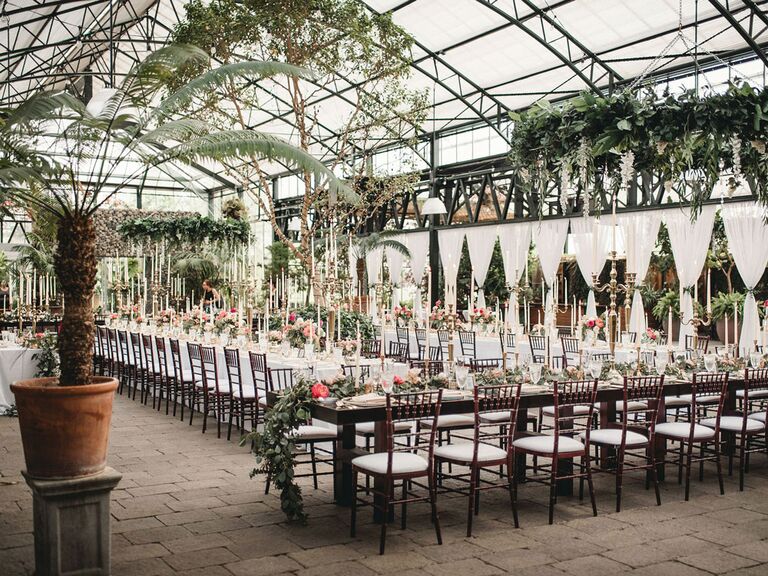
Yes, it’s awkward, but the conversation has to happen. Talk with your families about who will pay for what: Some brides’ families still pick up the entire tab (as is “tradition”), but it’s more and more common for grooms’ families to participate too. How do you bring up the conversation? For many couples, talking to each family separately is the best way to have truly open discussions. When you do talk, here are strategies for determining your initial budget.
Ask both of your folks if they’re planning to contribute to the cost of the wedding. If so, have them commit to a specific dollar amount, and then add up all the contributions to create your budget. Alternatively, it may be easier to ask each set of parents to finance a particular aspect of the wedding (such as the ceremony, honeymoon, or catering) instead of just committing to a dollar amount. Decide how much you two can contribute between now and the wedding. Below are some of the top considerations that can influence who pays for what.
The general budget
If you’re planning on a formal candlelit dinner in the grand ballroom of that amazing hotel downtown, your budget is clearly going to have to be much bigger than if you’ve sketched out an afternoon tea and dessert party in your parent’s’ pretty backyard. In general, there are several major factors that will really affect what you’ll need to set aside.
The guest list size
There’s a per-head cost for food and liquor, and these two are typically the biggest expenses of the whole wedding, so changing the guest list size is the surest way to increase or decrease your costs. On top of that, the smaller the guest list, the more you’ll save on all your other details, including décor, stationery, favors, and rentals, because you won’t need as much of everything.
The venue
Some cities and towns are just more expensive than others. New York, Chicago, and Los Angeles are the obvious culprits, but small towns and remote destinations can entail greater costs if things like flowers and talent have to come from afar. Tourist towns can also up your wedding price tag during peak season. Likewise, certain venues are more expensive than others. Some—such as a city park—come with no (or low) fees, while others, like a grand ballroom, might cost you the equivalent of a year’s college tuition. Also, be aware that many popular locations have headcount minimums, meaning they won’t host a wedding that’s too small, and some may also have a per-head minimum that requires your event to be a certain size.
The date and time
Highly sought-after seasons and days of the week are pricier for obvious reasons. An evening reception is usually more expensive than a brunch or afternoon reception, not only because of higher catering costs for dinner, but also because people tend to drink less during the daytime, and many couples choose to go more low-key on elements like lighting, music, and décor.
The wedding style
The more formal the affair, the more expensive, because you’ll have to match the site, food, and musical entertainment to the overall upscale tone. The outlay for a full six-course meal is typically greater than for a cocktail soirée with mostly hors d’oeuvres; the fee for a 12-piece band is greater than that for a DJ or quartet; all-out décor like lighting, specialty linens, and dramatic floral displays also will run up the bill. Plus, fancier affairs tend to be larger.
2. Not Allocating Funds Correctly
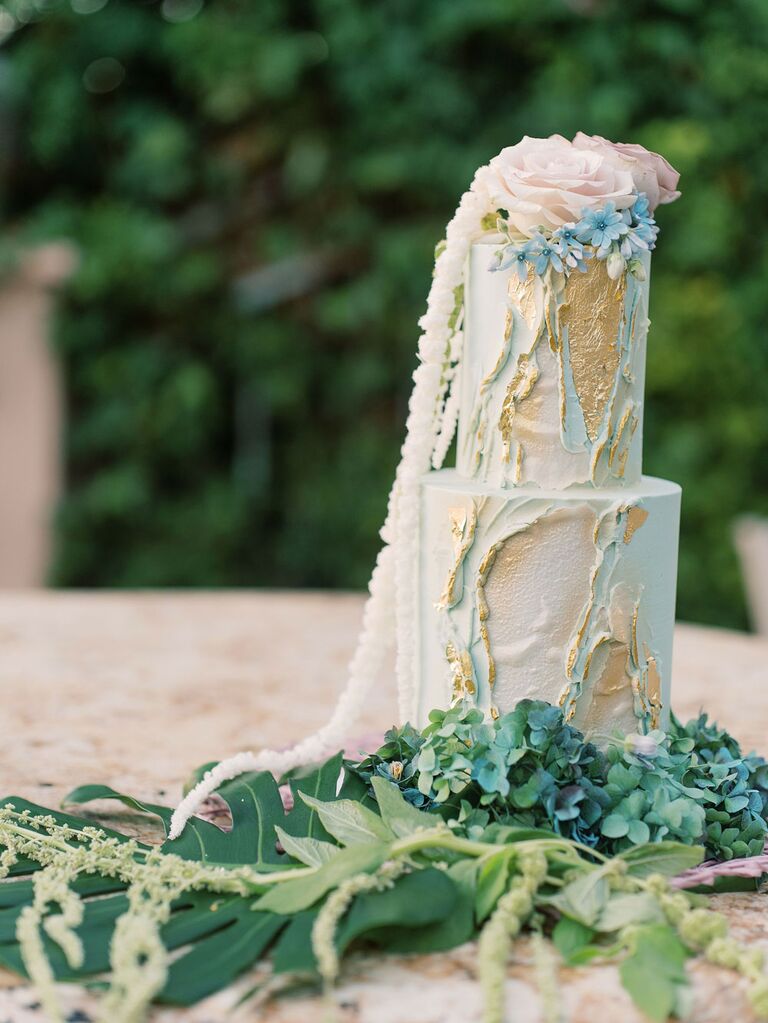
Just like buying shoes, an apartment, or a pair of jeans, when it comes to financing a wedding, you should figure out how much you need to spend to get what you want. Set your expectations accordingly, and use our budget breakdown above as a guide. (FYI, the average wedding cost is $33,931.) To avoid stress, also allot 5% of your budget for a “just-in-case” fund. If you’re paying for your honeymoon yourselves, remember to budget for that as well.
If you’re asking yourself how you can possibly save up for something as expensive as a wedding, don’t worry—it’s doable. As soon as you’re engaged, start putting aside as much of your income as you can for the wedding. Saving 20% of your monthly income is a good—though lofty—goal. The longer your engagement, the more you’ll be able to put away. You can also save up by limiting your spending on small stuff (watching Netflix instead of going out, curbing your Starbucks habits, and so on). These changes will hardly affect your quality of life, but after a year, the extra cash will cover some wedding essentials.
3. Forgetting to Keep Track of How Much You’ve Spent
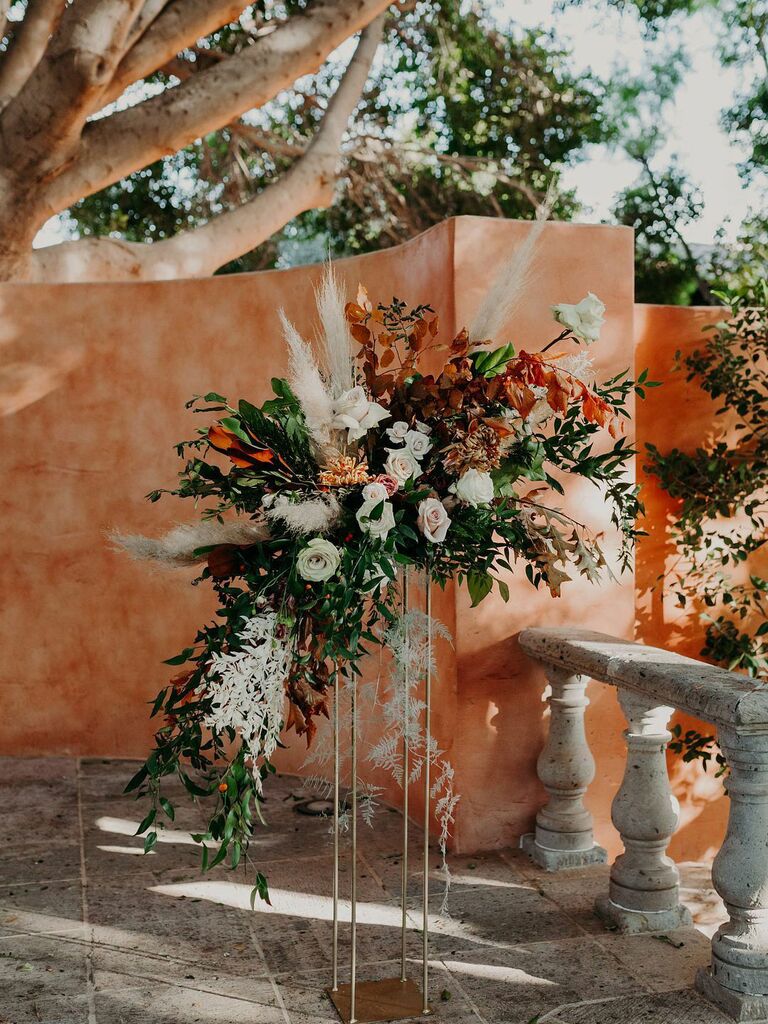
You’ve established your budget, but you have to spend the next few months keeping track and allocating your funds. Follow these four points to make sure your spending is where it should be.
Get a system
Put your accounting skills to the test by deciding on a budgeting system to track all the money coming in and out. The easiest way? The Knot Wedding Budget Calculator, which automatically tells you how much you should be spending on everything from music to mother-in-law gifts, and allows you to track all your payments and their due dates. Otherwise, you can put all your info in an old-fashioned spreadsheet. Just make sure you record every payment you make and who you owe what.
Explore hidden costs and extras
Knowing all the costs upfront will guarantee that your budget can actually cover it all. Research potential hidden fees that can add up over time. Below, we share five common extra costs to keep in mind:
- Overtime: If the party’s hopping, those extra 45 minutes may whiz by, but you’ll probably pay dearly in overtime costs for everyone from the photographer to the venue manager. If you suspect the wedding may go long, work overtime costs into your budget—if you don’t use it, it’ll be a nice surprise chunk of cash.
- Service fees: The “service charge” is additional fee venues charge to cover their own cost of hiring servers, coat checkers, and bathroom and parking attendants, which typically amounts to 20%-25%of the event’s total food and drink fee.
- “Free” trials: A florist’s demo may be gratis the first time, but if you make repeated changes, you risk being billed. And you’ll definitely want to factor in your hair trial with your stylist into your overall hair budget.
- Extra decorations: Things like stamps for the RSVP cards, ribbons for the favors, and marriage license fees seem so small that you can shrug them off, but like any costs, they add up. Going “just over budget” in a couple of different categories with a vague plan of making it up somewhere else can push you past your limit.
- Gratuities and tips: From the sexton who cleans the church to the hotel steward who delivers your welcome bags, even conservative tipping can add hundreds to your wedding cost. Make sure to account for these costs in your initial budget. You should also set aside at least $800 for gratuities (the additional amount given to your vendors for their hard work). As with a waiter or your hairdresser, tips are generally expected unless you’re unhappy with the service.
Plan to go over
If you account for budget overages, then you never actually blow your budget. Try to earmark 5% of your budget for unforeseen costs. Here are three areas where you might go over: flowers (a last-minute realization that something previously unconsidered needs to be decorated, or a request that an additional family member wears a boutonniere or corsage); weather-related expenses (umbrellas for a rainy day, space heaters for an unseasonably cool day or additional shade for a particularly hot or humid one); and small accidents (gown needs last-minute spot removal, something breaks in the days before the ceremony or menus get damp and need to get reprinted).
Be smart
Take advantage of budgeting and money management tricks along the way. Put all your wedding money in one separate account, so you can easily track additions and withdrawals without getting it confused with the rest of your day-to-day funds. Pay for as many of your expenses as possible on a credit card that gives you benefits like mileage, rewards, or cashback. Make sure everyone making purchases (your partner, mom, and so on) are all on the same card system, allowing you to benefit from the rewards and also from the easy tracking of your purchases. To avoid credit card fees, pay the bill off in full each month.
4. Not Saving Where You Can
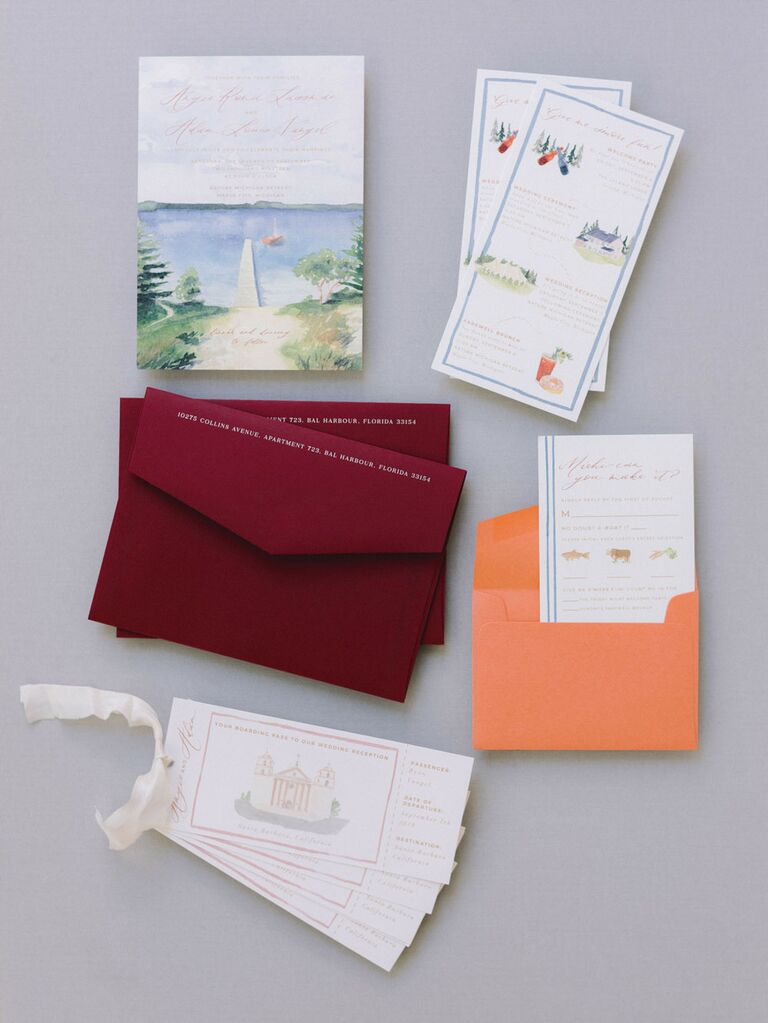
Whatever your budget, you don’t have to resort to DIY bouquets to come in on the target. Follow these 11 tips to have a chic wedding without sacrificing one iota of style.
Decide what’s most important
Pick your top three priorities and allocate a little extra money for them (like your gown, catering, and band). Next, pick the three things that come lowest on your priority list (maybe flowers, cake, and invitations), and budget accordingly.
Cut the guest list
We know it’s tough, but one of the fastest and most effective ways to lower your wedding cost is to pare down the invitees. Get out that red pen! At $100 a head, taking 10 guests off the guest list saves $1,000. Also, consider the size of your wedding party: Gifts and transportation are cheaper for two than for ten.
Pass on pricey details
Glamorous details on items you’re indifferent about spike costs without adding any fun to your day. Free yourself of the pressure to upgrade and instead make honest choices based on what you want. As a general rule, before you sign a contract, look through the itemized list of what you’re buying and ask yourself, “Will anyone notice if we don’t do this?”
Consider printing costs
Having two shades of ink on your invitation might match your color scheme, but it can also add massive printing costs; square invites also require extra postage. And of course, bespoke stationery typically costs more than customizable templates (The Knot Invitations has many gorgeous—and more affordable—options).
Get a smaller car
Town cars will shuttle your wedding party to the reception just as effectively as a stretch limo.
Skip the special effects
If you’re happy with simple wedding pictures, pass on options like sepia tones, multiple exposures, and split frames.
Substitute less expensive flowers
Choose flowers that are in season, and pick locally grown flowers rather than blooms that need to be flown in from afar to reduce costs. For example, if you exchange Black Magic roses for more reasonably priced, deeply colored dahlias in all your bouquets and table arrangements, you’ll save about $4 a stem. If you were planning on having five roses per bouquet and 10 per centerpiece, and have a wedding party of five ladies and a guest list of 150 people, you could save $700.
Simplify your menu
Reduce the number of overall dinner courses (making three courses fabulous costs less than serving five individual courses) and keep your menu simple. Stick with the specialties of the season and region.
Save the good stuff for later
Have the caterers bring out the fancy Dom Perignon for the toast, but pour less expensive champagne the rest of the night—no one will know the difference.
Pare down the cake extras
Order a small, fabulous wedding cake that’s exactly what you want and, in the kitchen, have several sheet cakes of the same flavor cut for your guests. And stay away from tiers and (time-consuming) handmade sugar flowers, fancy fillings, and special molded shapes. Have your caterer decorate each plate with a flavored sauce instead. Buttercream frosting is also tastier and less expensive than fondant.
Resell and reuse clothing
If you want to hold onto your wedding attire for sentimental reasons, we totally get it. That being said, you definitely don’t have to. Use Nearly Newlywed to resell your wedding dress, or consider sourcing a tuxedo from Rent the Runway. The same goes for all your wedding-related event outfits: there’s nothing wrong with borrowing or repurposing your pieces—sharing is caring, after all.
5. Not Being Realistic

As mentioned above, it’s easy to oversimplify some of the financial aspects of a wedding. To stay on top of your wedding budget, you have to be realistic about what each element generally costs. Once you know this, it’s easier to allocate funds from your budget.
There’s a lot to keep track of when it comes to wedding budget planning, but it doesn’t have to be stressful. Follow our tips above and you will be more equipped to stay within your means.
Create a free, personalized wedding website to keep your guests informed (and excited) about your plans, and a time-saving Guest List Manager to organize your attendees. Even better? You can sync your Guest List Manager and wedding website to update everything at once.

